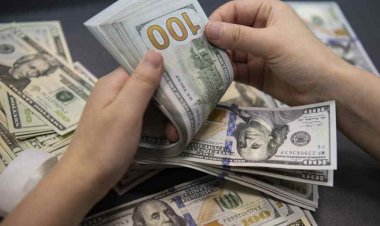The decline in China's trade threatens the growth prospects of the world's second largest economy

China's imports and exports fell much faster than expected in July, threatening growth prospects in the world's second-largest economy and piling pressure on the government to take new stimulus measures to boost demand.
Customs data showed China's imports fell 12.4 percent year-on-year in July, beating expectations for a 5 percent decline in a Reuters poll. Exports fell 14.5 percent, which is more than expected for a decline of 12.5 percent and exceeds the previous month's drop of 12.4 percent.
Imports recorded their sharpest drop since January, when coronavirus infections closed shops and factories, slamming domestic demand.
China's economy grew
China's economy grew at a subdued pace in the second quarter of the year as demand at home and abroad weakened, leading top leaders to pledge more political support and analysts to cut their growth forecasts for this year.
Weak imports and exports are the latest indication that growth may slow further in the third quarter as the construction, manufacturing and services sectors weaken and foreign direct investment and industrial profits decline.
The Chinese yuan hit a three-week low and Asian stocks fell after the data was released.
Authorities said last week that stimulus measures were imminent, but investors are not yet enthusiastic about proposals aimed at boosting consumption in the auto, real estate and service sectors.

China's trade
Beijing is seeking ways to boost domestic consumption without easing monetary policy too much, fearing that this will lead to a large capital outflow from the country in light of the reliance of other major economies on raising interest rates to curb inflation.
This situation affects economic activity in the rest of Asia. South Korea's exports to China fell 25.1 percent in July from a year earlier, the biggest drop in three months.
China's trade surplus increased by 80.6 billion dollars, exceeding expectations of 70.6 billion dollars, according to the survey.
On the other hand, the dollar extended its gains, as traders struggled to keep pace with the divergent growth forecasts of the world's two largest economies but took little interest in a disappointing new batch of Chinese trade data.
Today's data showed that China's imports and exports fell much faster than expected in July, with imports down 12.4 percent from a year ago and exports down 14.5 percent, in another sign that China's economic recovery is stalling.

The deterioration of the yuan and the Australian and New Zealand dollars increased initially after the release of the data, but the three currencies later compensated for some losses thanks to bets that the weak data will reinforce the need for more stimulus measures from Beijing.
The yuan fell in foreign transactions, recording the lowest level in more than two weeks at 7.2334 per dollar, as well as the decline in the internal market to its lowest level in more than two weeks at 7.2223 per dollar.


 Shrouq
Shrouq 












